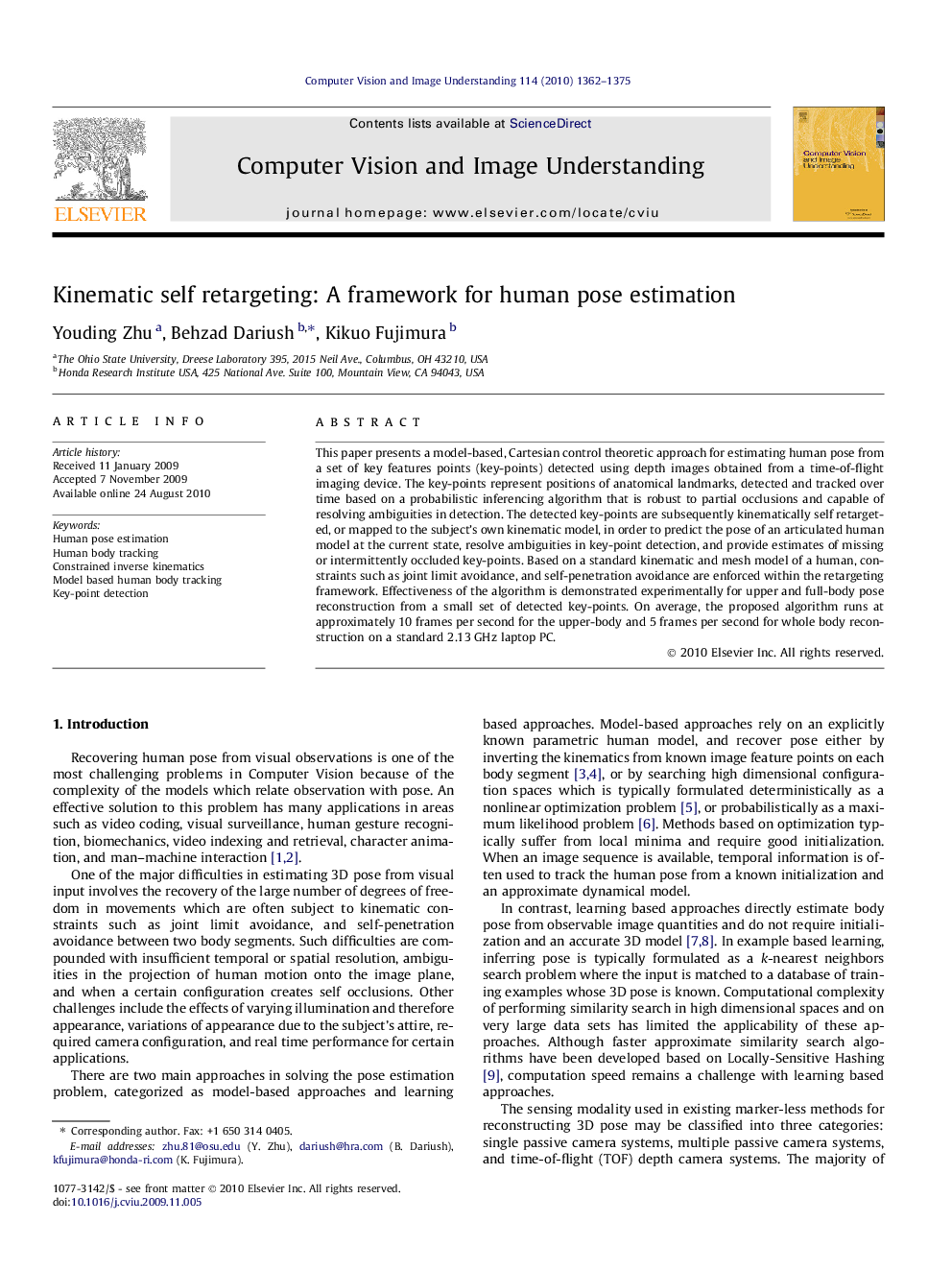| Article ID | Journal | Published Year | Pages | File Type |
|---|---|---|---|---|
| 526174 | Computer Vision and Image Understanding | 2010 | 14 Pages |
This paper presents a model-based, Cartesian control theoretic approach for estimating human pose from a set of key features points (key-points) detected using depth images obtained from a time-of-flight imaging device. The key-points represent positions of anatomical landmarks, detected and tracked over time based on a probabilistic inferencing algorithm that is robust to partial occlusions and capable of resolving ambiguities in detection. The detected key-points are subsequently kinematically self retargeted, or mapped to the subject’s own kinematic model, in order to predict the pose of an articulated human model at the current state, resolve ambiguities in key-point detection, and provide estimates of missing or intermittently occluded key-points. Based on a standard kinematic and mesh model of a human, constraints such as joint limit avoidance, and self-penetration avoidance are enforced within the retargeting framework. Effectiveness of the algorithm is demonstrated experimentally for upper and full-body pose reconstruction from a small set of detected key-points. On average, the proposed algorithm runs at approximately 10 frames per second for the upper-body and 5 frames per second for whole body reconstruction on a standard 2.13 GHz laptop PC.
Research highlights► 3D human pose estimation from depth image streams. ► Key feature point detection based on a probabilistic inference algorithm. ► Real time reconstruction of 3D human pose from low dimensional key feature points. ► Model based constrained inverse kinematics formulation. ► Human pose satisfies kinematic constraints including joint limits and self collisions.
